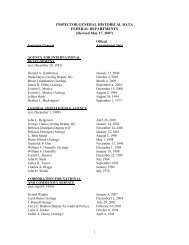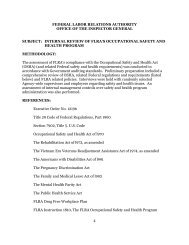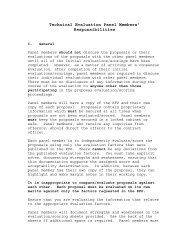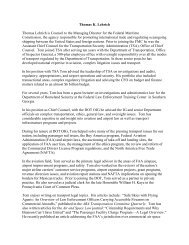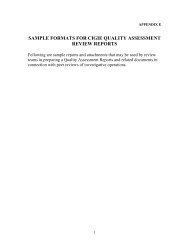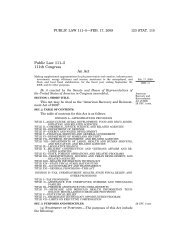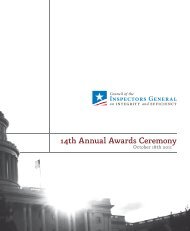GAO-12-208G, Designing Evaluations: 2012 Revision
GAO-12-208G, Designing Evaluations: 2012 Revision
GAO-12-208G, Designing Evaluations: 2012 Revision
You also want an ePaper? Increase the reach of your titles
YUMPU automatically turns print PDFs into web optimized ePapers that Google loves.
Table 3: Common Designs for Outcome <strong>Evaluations</strong><br />
Chapter 4: Designs for Assessing Program<br />
Implementation and Effectiveness<br />
Evaluation question Design<br />
Is the program achieving its desired outcomes or having other<br />
important side effects?<br />
Do program outcomes differ across program components,<br />
providers or recipients?<br />
Assessing the Achievement<br />
of Intended Outcomes<br />
Assessing Change in<br />
Outcomes<br />
Source <strong>GAO</strong>.<br />
• Compare program performance to law and regulations,<br />
program logic model, professional standards, or<br />
stakeholder expectations<br />
• Assess change in outcomes for participants before and<br />
after exposure to the program<br />
• Assess differences in outcomes between program<br />
participants and nonparticipants<br />
Assess variation in outcomes (or change in outcomes) across<br />
approaches, settings, providers, or subgroups of recipients<br />
Like outcome monitoring, outcome evaluations often assess the benefits<br />
of the program for participants or the broader public by comparing data on<br />
program outcomes to a preestablished target value. The criterion could<br />
be derived from law, regulation, or program design, while the target value<br />
might be drawn from professional standards, stakeholder expectations, or<br />
the levels observed previously in this or similar programs. This can help<br />
ensure that target levels for accomplishments, compliance, or absence of<br />
error are realistic. For example,<br />
• To assess the immediate outcomes of instructional programs, an<br />
evaluator could measure whether participants’ experienced short-term<br />
changes in knowledge, attitudes, or skills at the end of their training<br />
session. The evaluator might employ post-workshop surveys or<br />
conduct observations during the workshops to document how well<br />
participants understood and can use what was taught. Depending on<br />
the topic, industry standards might provide a criterion of 80 percent or<br />
90 percent accuracy, or demonstration of a set of critical skills, to<br />
define program success. Although observational data may be<br />
considered more accurate indicators of knowledge and skill gains than<br />
self-report surveys, they can often be more resource-intensive to<br />
collect and analyze.<br />
In programs where there are quantitative measures of performance but<br />
no established standard or target value, outcome evaluations at least may<br />
rely on assessing change or differences in desired outputs and outcomes.<br />
The level of the outcome of interest, such as client behavior or<br />
environmental conditions, is compared with the level observed in the<br />
absence of the program or intervention. This can be done by comparing<br />
Page 36 <strong>GAO</strong>-<strong>12</strong>-<strong>208G</strong>



